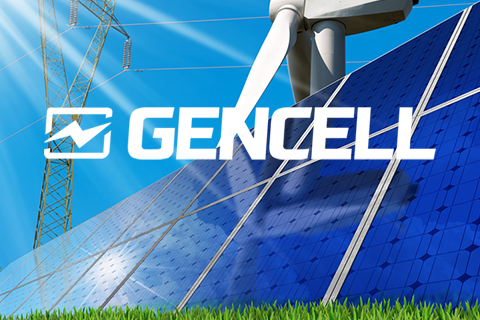Reducing Rural Telecom OPEX With New Affordable Fuel Cell Power
1.1 billion people lack electricity for lighting, telecom, cooking, clean water and economic development. 84% of them live in rural areas beyond the grid where they face distinct disadvantages in education, health, and quality of life. The GSMA estimates that by 2020, 390,000 telecom towers will be off-grid, and 790,000 will be in poor-grid locations.
Powering these towers is a complex and costly challenge. If these towers are powered by diesel generators, they will consume $19 billion of diesel fuel and release about 45 million tons of CO2 each year.
In the 21st century, our concern for the environment makes this an unacceptable solution.
There are greener alternatives available. Indeed, renewable solutions using solar and wind are a step in the right direction, but on cloudy or windless days, they can’t produce electricity. And dust and dirt from the wind can reduce the power generated by photovoltaic cells by up to 85%.
Fuel cells are another option for producing clean energy. They use hydrogen and oxygen to generate 100% green power. They are weather-independent, low-maintenance, and reliable enough to supply power for the American and Russian space programs. But like bulletproof space technology, fuel cells have historically been a bit on the expensive side.
GenCell decided to take this amazing technology for space and make it cost-effective for use on Earth. But to do this, we needed to overcome two barriers: the Capex, the capital cost of the fuel cell itself, and the Opex, the relatively high operational expenses of the fuel cell—mainly from the cost of the hydrogen fuel.
By developing a patented non-platinum catalyst and removing most of the noble metals inside our fuel cells, we were able to reduce the Capex of our fuel cell technology.
The second challenge, overcoming the cost and availability of the hydrogen fuel, was a bit more complex. Hydrogen isn’t available on every street corner like petrol (gasoline) or diesel. And the infrastructure for making hydrogen readily available will cost billions of dollars and take many years to build.
But the 1.1 billion people without electricity for communication, lighting and education can’t wait that long.
It quickly became clear to us that anhydrous ammonia (NH3) is an ideal liquid carrier of hydrogen. As the second most-produced inorganic chemical in the world, it’s readily available and safely used for agriculture, refrigeration, water purification and much, much more.
For the last six years, we have invested our time and energy into developing a revolutionary process that allows our GenCell A5 Off-Grid Power Solution to create hydrogen-on-demand from ammonia without any power from the grid. This means that we have the first fuel cell solution that’s not only clean, weather-independent and low-maintenance, but also overcomes the limits of today’s hydrogen infrastructure.
Indeed, a single 12-ton tank of ammonia can provide enough fuel for the GenCell A5 to power a base station for an entire year—making it ideal for your most remote, rural locations. Using the GenCell A5 instead of diesel generators at 1,000 sites over a 10-year period can reduce your Opex by up to $250M and reduce your carbon footprint by 310,000 tons2.
The GenCell A5 is indeed the first off-grid solution to deliver “clean power for humanity.” It’s weather-independent and more reliable than renewable energy sources, and at just $0.50 per kWh, it’s less expensive than diesel generators to operate. But ultimately, the GenCell A5 solution is not just for providing low-cost power for off-grid and poor-grid telecom. It’s about providing clean power for rural electrification that improves education, health and quality of life.2
Fuel cells offer many benefits, including unlimited run-time, simple annual maintenance and zero emissions, but until now a lack of infrastructure for distributing hydrogen has prohibited their mainstream adoption. Fortunately, there is finally an alternative to investing billions of dollars on building hydrogen infrastructure: just create hydrogen from ammonia. The GenCell A5 Off-Grid Power Solution means that fuel cells are not just more reliable and cleaner than diesel generators, but also significantly less expensive to maintain and operate.
On 2 July 2018, leading African telecom integrator, Adrian Kenya, was named as the first commercial customer in Africa of the new GenCell A5 Off-Grid Power Solution and will install the solution at 800 telecom base stations across Kenya. To read the full press release click here.
1 Based on a diesel generator producing 821 g of CO2 per 1 kW/H.
2 Based on the current global average price of diesel and ammonia, with the GenCell A5 providing 24×7 off-grid power at 1,000 towers and an average ammonia price of $280 per ton.
The full GenCell Case Study will be available to download here soon.
To feature as an Innovator, please fill out our form here.
The GSM Association (“Association”) makes no representation, warranty or undertaking (express or implied) with respect to and does not accept any responsibility for, and hereby disclaims liability for the accuracy or completeness or timeliness of the information contained in this document.

